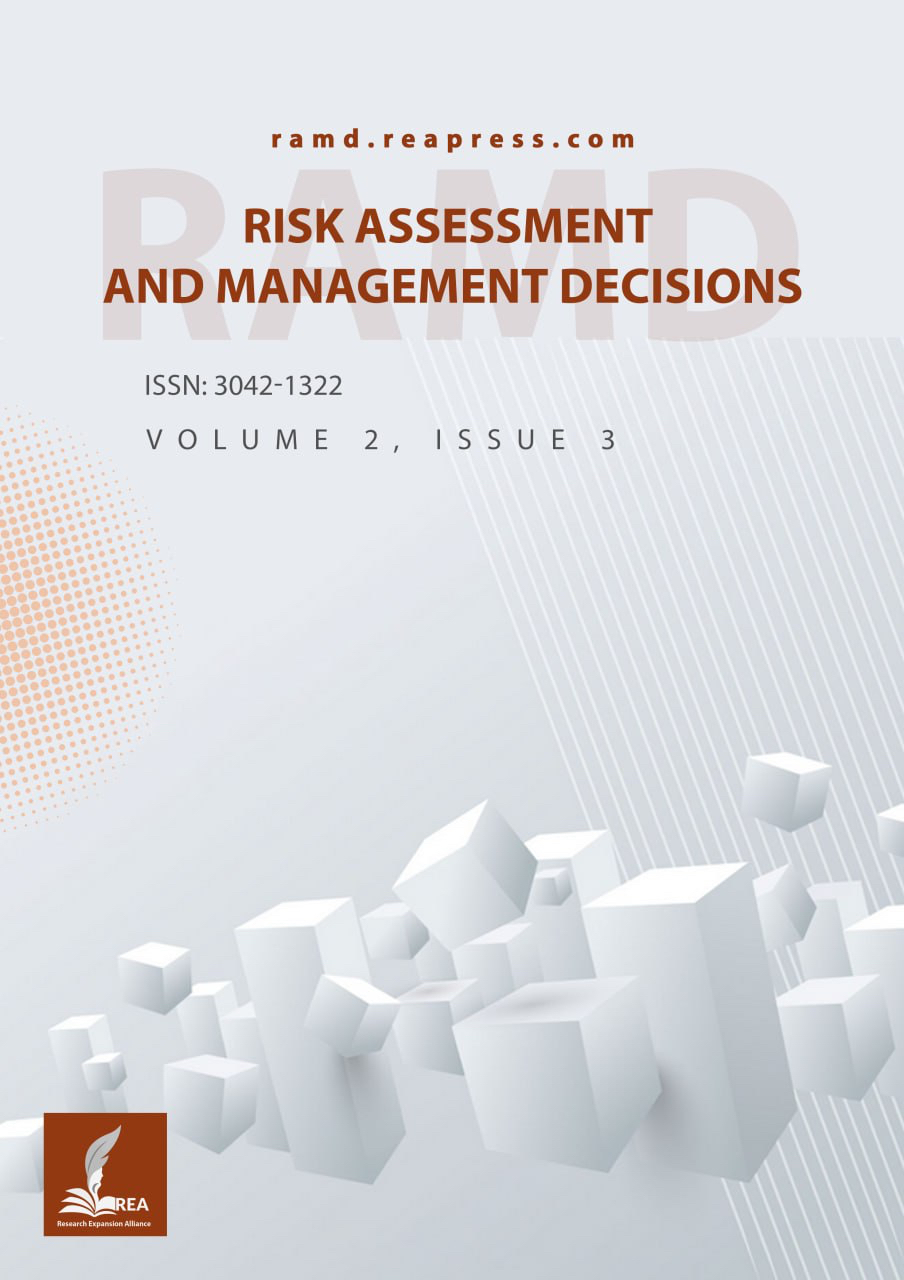A HyF-WASPAS Method based on Similarity Measure to Access Renewable Energy Technologies
Abstract
Population growth and technological advancements have progressively expanded the demand in global energy. Growing public awareness about environmental problems, as well as the depletion of fossil resources, have prompted a worldwide shift to renewable energy sources. Renewable energy conveys an adaptable and sustainable approach for meeting future demands. Growing usage of renewable energy reinforces a significant combination of economic benefits, social progresses, environmental issues, technological advancements of sustainable solutions. Determining an efficient Renewable Energy Technology (RET) is a challenging task for decision-makers involving a variety of sustainability factors that creates uncertainty. The present research aims to offer a new, robust framework for evaluating RETs from a sustainable perspective by employing a novel similarity measure and the Weighted Aggregated Sum Product Assessment (WASPAS) approach in a Hyperbolic Fuzzy decision environment. Even though several kinds of studies have recently contributed to the evaluation of RET, no research has investigated RET in HyF framework, along with none of the existing literature has examined similarity measure on Hyperbolic Fuzzy Sets (HyFSs), which can effectively handle optimistic and pessimistic grades independently. Consequently, this paper firstly develops a novel similarity measure for HyFSs that efficaciously addresses all the axiomatic definitions and fundamental properties of a similarity measure on HyFSs. Moreover, its superiority and reliability are demonstrated through a comparative analysis with the existing similarity measures. Next, the WASPAS method is extended to solve Multiple-Criteria Decision Making (MCDM) problems in HyFSs. Further, we employ this proposed methodology towards the most effective RET selection while comparing this to the existing MCDM methods to validate its reliability and consistency. The experimental results indicate the proposed MCDM methodology successfully determines RETs in a Hyperbolic Fuzzy environment and exhibits higher consistency in comparison to the existing methods.
Keywords:
Hyperbolic fuzzy sets, Renewable energy technologies, Similarity measure, Weighted aggregated sum product assessment, Multiple-criteria decision makingReferences
- [1] Zadeh, L. A. (1965). Fuzzy sets. Information and control, 8(3), 338–353. https://doi.org/10.1016/S0019-9958(65)90241-X
- [2] Atanassov, K. T. (1986). Intuitionistic fuzzy sets. Fuzzy sets and systems, 20(1), 87–96. https://doi.org/10.1016/S0165-0114(86)80034-3
- [3] Yager, R. R. (2013). Pythagorean fuzzy subsets. 2013 joint IFSA world congress and NAFIPS annual meeting (IFSA/NAFIPS) (pp. 57–61). IEEE. https://doi.org/10.1109/IFSA-NAFIPS.2013.6608375
- [4] Yager, R. R. (2016). Generalized orthopair fuzzy sets. IEEE transactions on fuzzy systems, 25(5), 1222–1230. https://doi.org/10.1109/TFUZZ.2016.2604005
- [5] Senapati, T., & Yager, R. R. (2020). Fermatean fuzzy sets. Journal of ambient intelligence and humanized computing, 11, 663–674. https://doi.org/10.1007/s12652-019-01377-0
- [6] Dutta, P., & Borah, G. (2023). Construction of hyperbolic fuzzy set and its applications in diverse COVID-19 associated problems. New mathematics and natural computation, 19(01), 217–288. https://doi.org/10.1142/S1793005723500072
- [7] Peng, X., Yuan, H., & Yang, Y. (2017). Pythagorean fuzzy information measures and their applications. International journal of intelligent systems, 32(10), 991–1029. https://doi.org/10.1002/int.21880
- [8] Wei, G., & Wei, Y. (2018). Similarity measures of Pythagorean fuzzy sets based on the cosine function and their applications. International journal of intelligent systems, 33(3), 634–652. https://doi.org/10.1002/int.21965
- [9] Song, Y., Wang, X., Quan, W., & Huang, W. (2019). A new approach to construct similarity measure for intuitionistic fuzzy sets. Soft computing, 23(6), 1985–1998. https://doi.org/10.1007/s00500-017-2912-0
- [10] Jiang, Q., Jin, X., Lee, S. J., & Yao, S. (2019). A new similarity/distance measure between intuitionistic fuzzy sets based on the transformed isosceles triangles and its applications to pattern recognition. Expert systems with applications, 116, 439–453. https://doi.org/10.1016/j.eswa.2018.08.046
- [11] Gohain, B., Gogoi, S., Chutia, R., & Dutta, P. (2024). Dissimilarity measure on intuitionistic fuzzy sets from an optimistic viewpoint of the information and its diverse applications. International journal of machine learning and cybernetics, 15(6), 2149–2177. https://doi.org/10.1007/s13042-023-02021-2
- [12] Wang, H., Tuo, C., Wang, Z., Feng, G., & Li, C. (2024). Enhancing similarity and distance measurements in Fermatean fuzzy sets: Tanimoto-inspired measures and decision-making applications. Symmetry, 16(3), 277. https://doi.org/10.3390/sym16030277
- [13] Stanujkić, D., & Karabašević, D. (2018). An extension of the WASPAS method for decision-making problems with intuitionistic fuzzy numbers: A case of website evaluation. Operational research in engineering sciences: theory and applications, 1(1), 29–39. https://doi.org/10.31181/oresta19012010129s
- [14] Mishra, A. R., Singh, R. K., & Motwani, D. (2019). Multi-criteria assessment of cellular mobile telephone service providers using intuitionistic fuzzy WASPAS method with similarity measures. Granular computing, 4(3), 511–529. https://doi.org/10.1007/s41066-018-0114-5
- [15] Kahraman, C., Onar, S. C., Oztaysi, B., & Ilbahar, E. (2019). Selection among GSM operators using pythagorean fuzzy WASPAS method. Journal of multiple-valued logic & soft computing, 33. https://B2n.ir/kx3420
- [16] Ilbahar, E., Cebi, S., & Kahraman, C. (2020). RETRACTED: Prioritization of renewable energy sources using multi-experts Pythagorean fuzzy WASPAS. Journal of intelligent & fuzzy systems, 39(5), 6407–6417. https://doi.org/10.3233/JIFS-189106%0A
- [17] Keshavarz-Ghorabaee, M., Amiri, M., Hashemi-Tabatabaei, M., Zavadskas, E. K., & Kaklauskas, A. (2020). A new decision-making approach based on Fermatean fuzzy sets and WASPAS for green construction supplier evaluation. Mathematics, 8(12), 2202. https://doi.org/10.3390/math8122202
- [18] Mishra, A. R., & Rani, P. (2021). Multi-criteria healthcare waste disposal location selection based on Fermatean fuzzy WASPAS method. Complex & intelligent systems, 7(5), 2469–2484. https://doi.org/10.1007/s40747-021-00407-9
- [19] Rani, P., Mishra, A. R., Mardani, A., Cavallaro, F., Štreimikienė, D., & Khan, S. A. R. (2020). Pythagorean fuzzy SWARA--VIKOR framework for performance evaluation of solar panel selection. Sustainability, 12(10), 4278. https://doi.org/10.3390/su12104278
- [20] Krishankumar, R., Ravichandran, K. S., Kar, S., Cavallaro, F., Zavadskas, E. K., & Mardani, A. (2019). Scientific decision framework for evaluation of renewable energy sources under q-rung orthopair fuzzy set with partially known weight information. Sustainability, 11(15), 4202. https://doi.org/10.3390/su11154202
- [21] Gupta, P., Mehlawat, M. K., & Grover, N. (2016). Intuitionistic fuzzy multi-attribute group decision-making with an application to plant location selection based on a new extended VIKOR method. Information sciences, 370–371, 184–203. https://doi.org/10.1016/j.ins.2016.07.058
- [22] Sitorus, F., & Brito-Parada, P. R. (2022). The selection of renewable energy technologies using a hybrid subjective and objective multiple criteria decision making method. Expert systems with applications, 206, 117839. https://doi.org/10.1016/j.eswa.2022.117839
- [23] Saikia, B., Dutta, P., & Talukdar, P. (2023). An advanced similarity measure for Pythagorean fuzzy sets and its applications in transportation problem. Artificial intelligence review, 56(11), 12689–12724. https://doi.org/10.1007/s10462-023-10421-7
- [24] Gül, S. (2021). Fermatean fuzzy set extensions of SAW, ARAS, and VIKOR with applications in COVID-19 testing laboratory selection problem. Expert systems, 38(8), e12769. https://doi.org/10.1111/exsy.12769
- [25] Chen, T. Y. (2019). A novel VIKOR method with an application to multiple criteria decision analysis for hospital-based post-acute care within a highly complex uncertain environment. Neural computing and applications, 31(8), 3969–3999. https://doi.org/10.1007/s00521-017-3326-8
- [26] Abdel-Basset, M., Mohamed, M., & Smarandache, F. (2018). An extension of neutrosophic AHP--SWOT analysis for strategic planning and decision-making. Symmetry, 10(4), 116. https://doi.org/10.3390/sym10040116
- [27] Churchman, C. W., & Ackoff, R. L. (1954). An approximate measure of value. Journal of the operations research society of america, 2(2), 172–187. https://doi.org/10.1287/opre.2.2.172
- [28] Zavadskas, E. K., & Turskis, Z. (2010). A new additive ratio assessment (ARAS) method in multicriteria decision-making. Technological and economic development of economy, 16(2), 159–172. https://doi.org/10.3846/tede.2010.10


